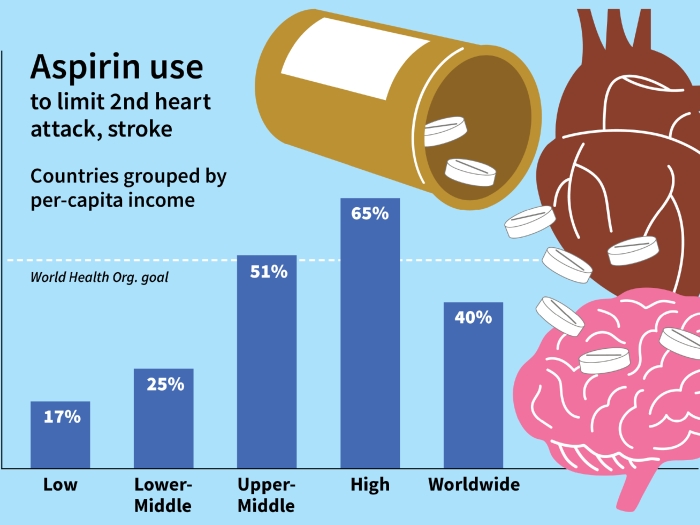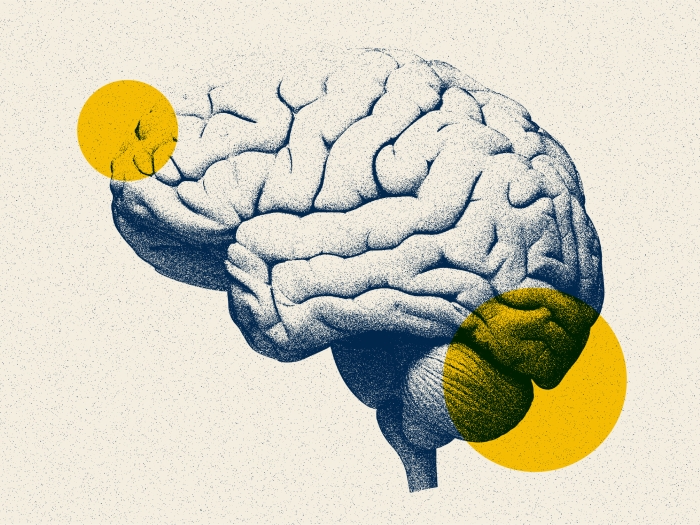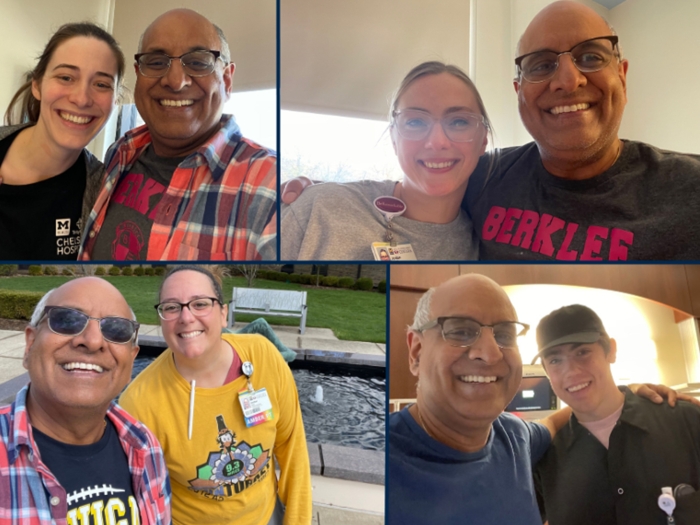When Bill Sanders suffered a stroke, his immediate treatment led to a full recovery. As part of National Stroke Awareness Month, he shares his story.
10:30 AM
Author |

Last Oct. 9 began as a stressful day for Linda and Bill Sanders. But they had no way of knowing just how stressful that day would become.
The couple were visiting Bill's brother, who was in the intensive care unit at the University of Michigan Frankel Cardiovascular Center and not expected to live.
LISTEN UP: Add the new Michigan Medicine News Break to your Alexa-enabled device, or subscribe to our daily audio updates on iTunes, Google Play and Stitcher.
As the Flushing, Michigan, residents took a quick lunch break in the ICU visitors' area, Linda noticed her 60-year-old husband was having difficulty eating. She jokingly commented about it, but when she saw his left arm fall to his side, she knew it was no laughing matter.
They needed help. Bill was having a stroke.
"Before I knew it, there were 20 people surrounding us," Linda recalls.
"They threw me on a gurney," Bill says. "I still didn't believe it was happening to me, but they told me: 'You've had a stroke.'"
Ischemic stroke
Bill was whisked away to the Emergency Department, where a CT scan detected a clot in a major blood vessel of his brain, causing an ischemic stroke.
The stroke team immediately evaluated Bill and explained next steps to Linda as she stood by her husband's side. Bill would be given a clot-busting medication called tissue plasminogen activator (tPA) to dissolve the clot.
"Intravenous tPA can be administered up to 4 1/2 hours from the onset of stroke symptoms," says Cemal Sozener, M.D., co-director of the Comprehensive Stroke Center at U-M. "But the earlier this treatment can be delivered, the better the chances of reducing the long-term effects of stroke and providing opportunity for a full recovery."
Thrombectomy
Bill would also undergo thrombectomy, a novel therapy that can benefit certain patients up to 24 hours after the onset of stroke symptoms.
During this minimally invasive procedure, a catheter is threaded through an artery in the groin or arm and up to the blocked artery in the brain. A stent is then deployed into the clot to trap and remove it, along with the stent.
"This endovascular approach enables us to successfully treat stroke patients with significant deficits in a much larger time window than ever before," says Sozener, noting that traditional intravenous medications such as tPA aren't as successful at breaking down larger blood clots.
"Scientific advances have allowed these mechanical therapies to reach in and remove the clot from inside the blood vessels," he says.
SEE ALSO: Ischemic vs. Hemorrhagic Stroke: What's the Difference?
Sozener also points to recent successful international clinical trials that have allowed for these novel therapies to be extended out to 24 hours from the start of a patient's stroke symptoms, providing even more treatment options.
"As a comprehensive stroke center, our multidisciplinary team is uniquely qualified to deliver these advanced stroke therapies," he says.
Remarkable recovery
Linda was amazed at her husband's quick recovery.
"Within an hour, Bill was back in his room and acting fine," Linda says. She knew he was OK when he complained that the medical team had cut off his vintage Star Wars T-shirt, a cherished gift from his daughter. "He also complained that he didn't have a chance to finish his lunch."
Bill left the hospital two days later, feeling as though "nothing had happened." He now takes a daily baby aspirin and a statin to control his cholesterol, and he is determined to pursue a healthier lifestyle.
MORE FROM MICHIGAN: Sign up for our weekly newsletter
Bill and Linda are thankful that luck was on their side that day.
"I was definitely in the right place at the right time," Bill says. As a pharmaceutical delivery person, he probably would have been on the road at the time of the stroke if he hadn't been visiting his brother in the hospital.
"Bob kind of saved my life," he says.
Bill is happy to report that Bob is doing OK. And so is he. But, he warns, "if this could happen to me, it could happen to anybody."
Know the signs of stroke
Sozener wants people to be able to identify the signs of stroke by remembering the acronym F.A.S.T.:
-
Face
-
Arms
-
Speech
-
Time

Specifically, if one side of the face is drooping, an arm goes weak or numb or speech is slurred, you might be experiencing a stroke.
"Time is critical, and prompt emergency treatment is crucial," Sozener says, noting that an average of 1.9 million neurons die each minute during a stroke.
Even if a patient isn't sure he or she is having a stroke, it's better to have a doctor make that determination.
"Don't assume the symptoms you're experiencing, like numbness or vision problems, will go away," Sozener says. When patients become ineligible for acute stroke therapies, "it's because they waited too long before coming to the hospital."
That's why it is crucial to call 911 immediately if a stroke is suspected.
"EMS will pre-activate our stroke team, so the emergency medicine and neurology providers are ready and waiting when the patient arrives," Sozener says. "This saves vital minutes that can have a profound impact on a patient's ultimate outcome."

Explore a variety of healthcare news & stories by visiting the Health Lab home page for more articles.

Department of Communication at Michigan Medicine
Want top health & research news weekly? Sign up for Health Lab’s newsletters today!





